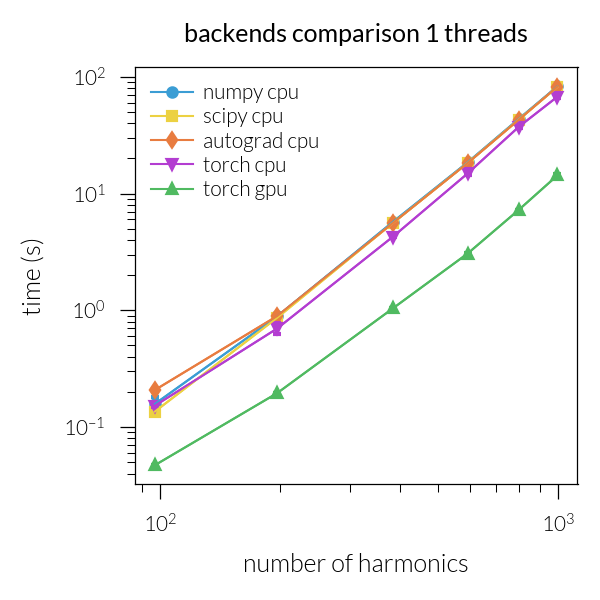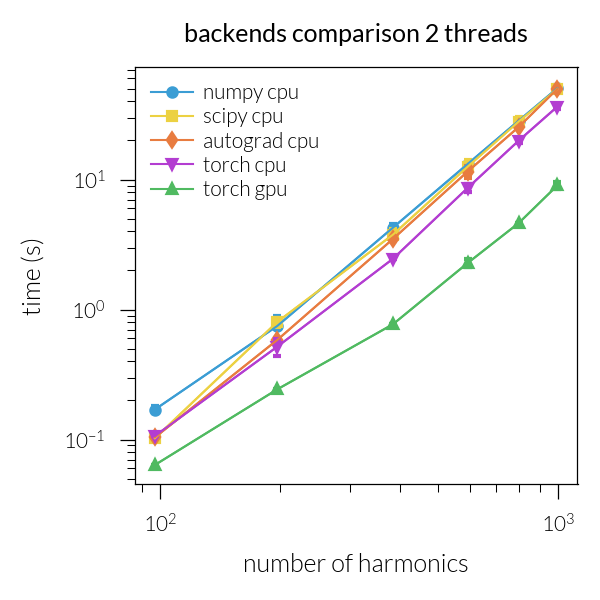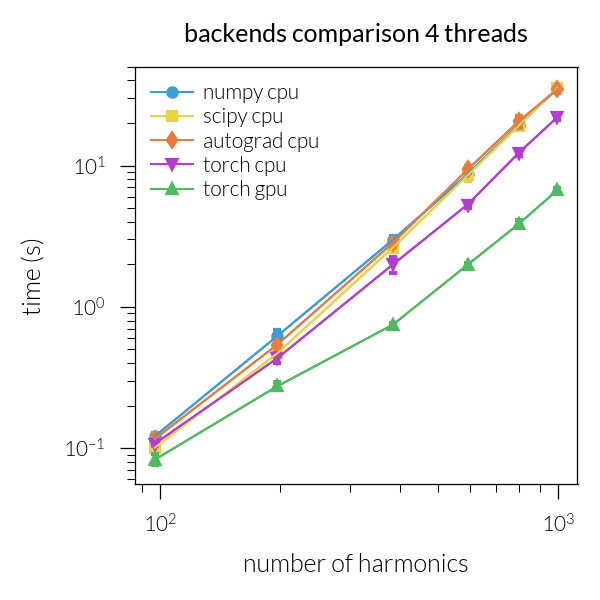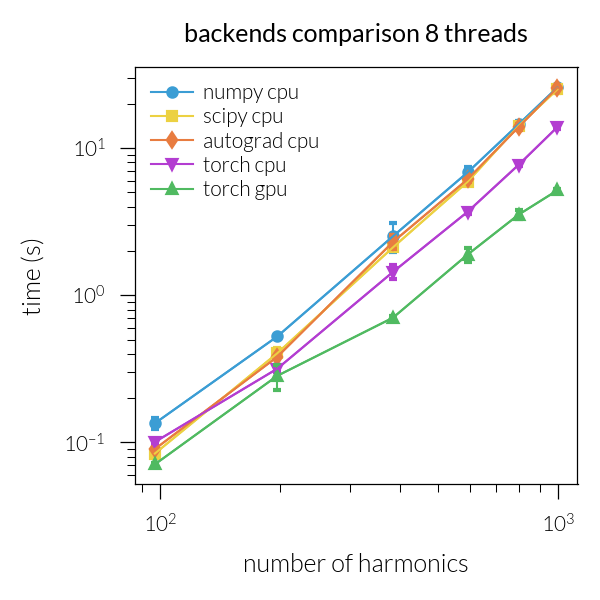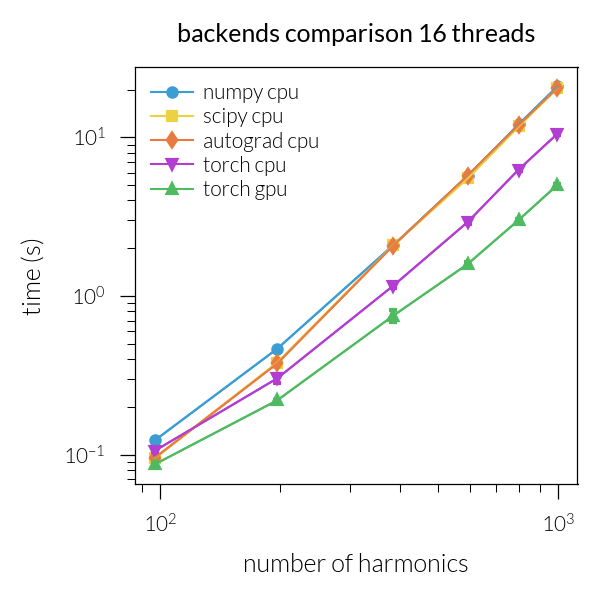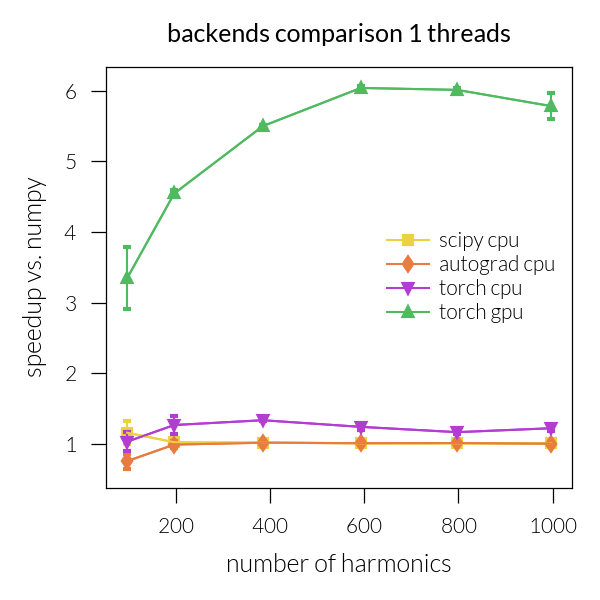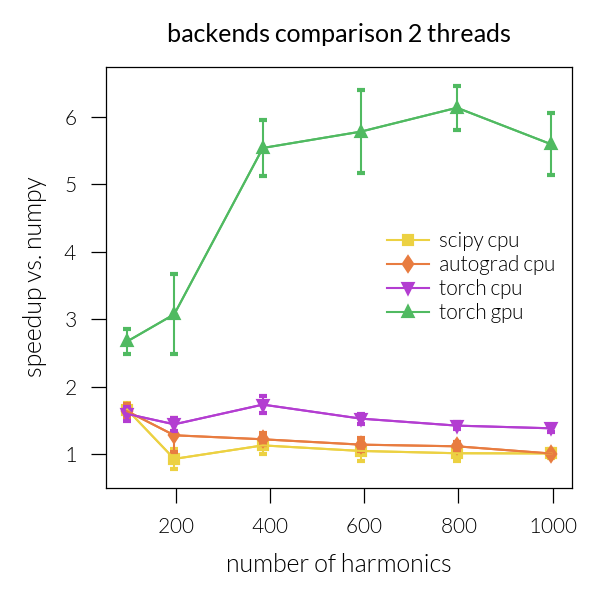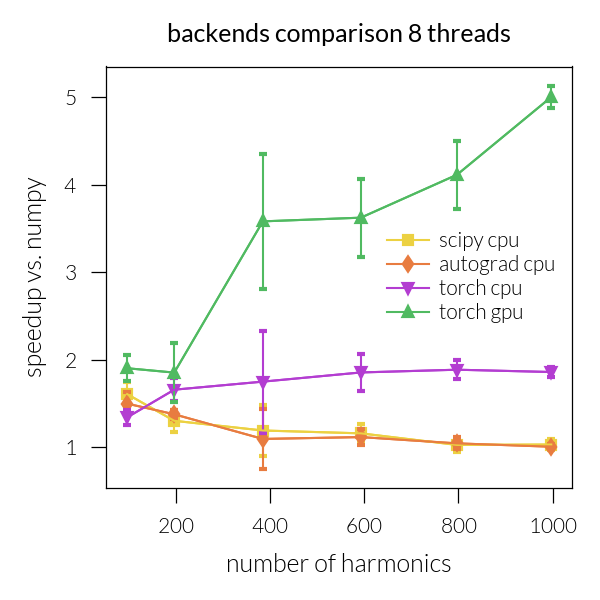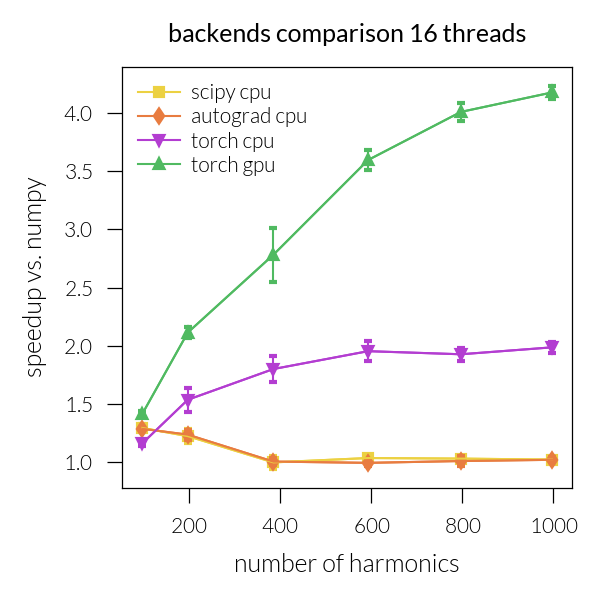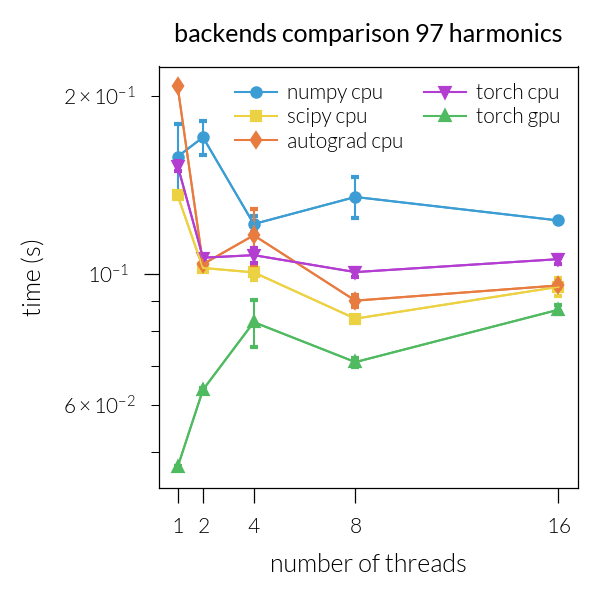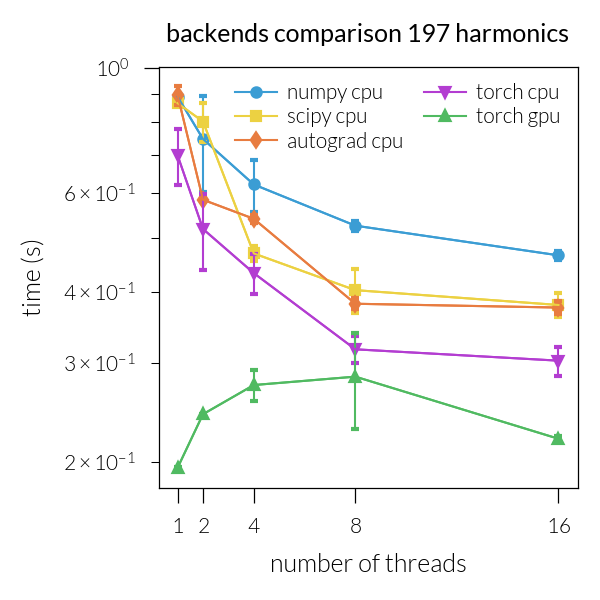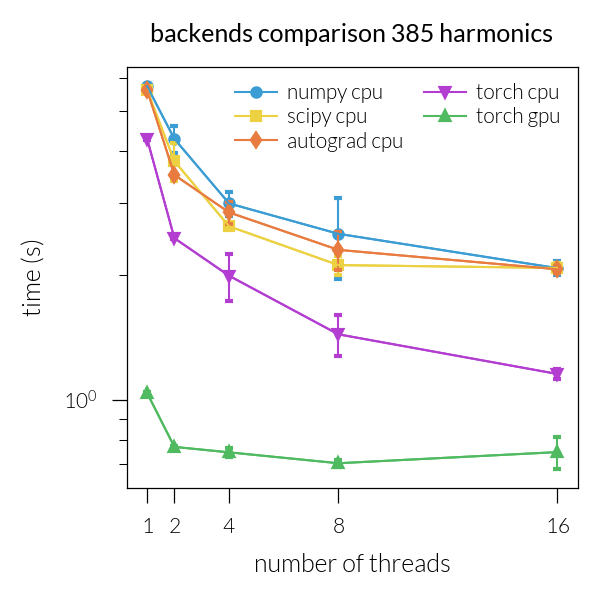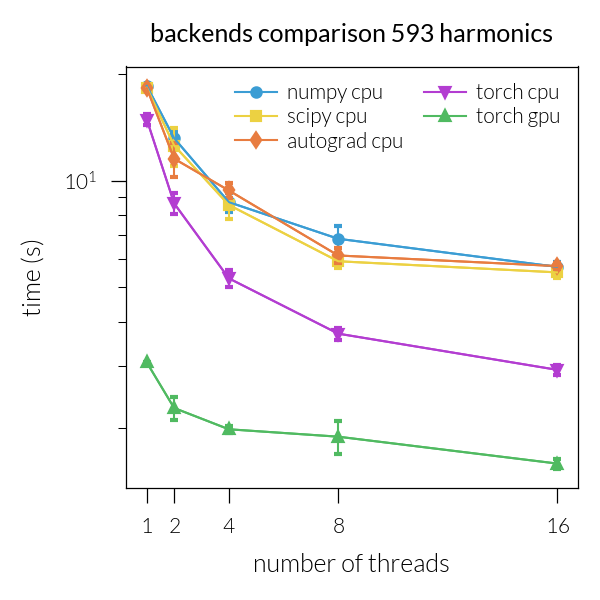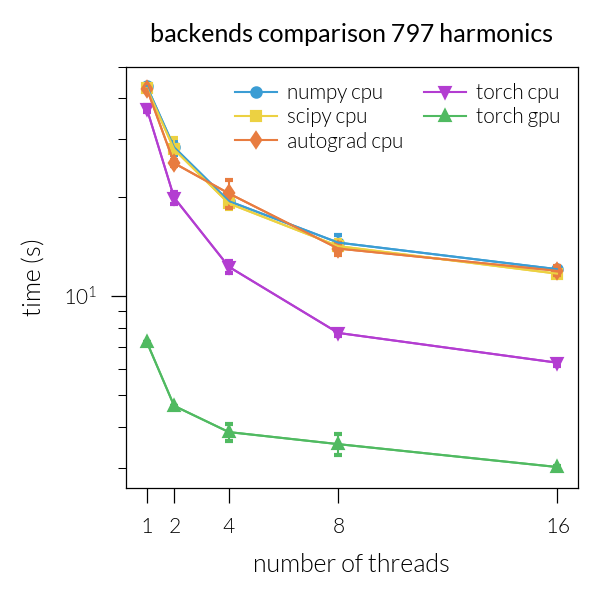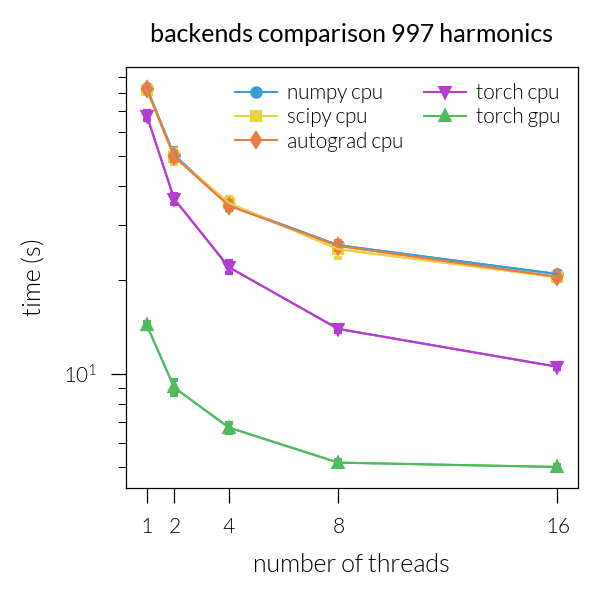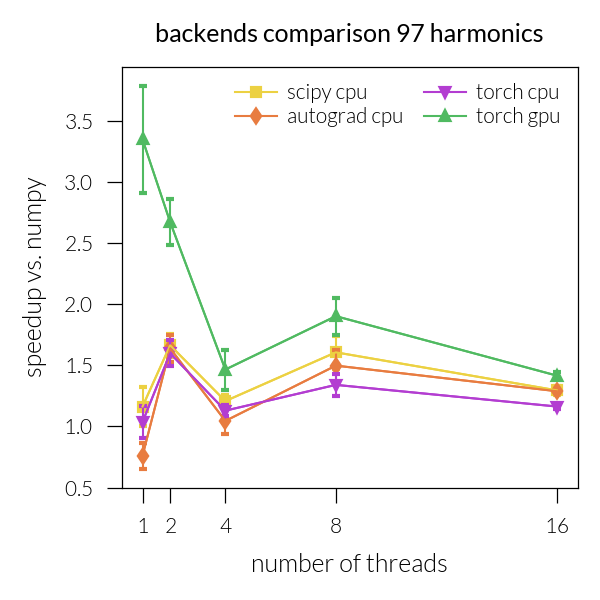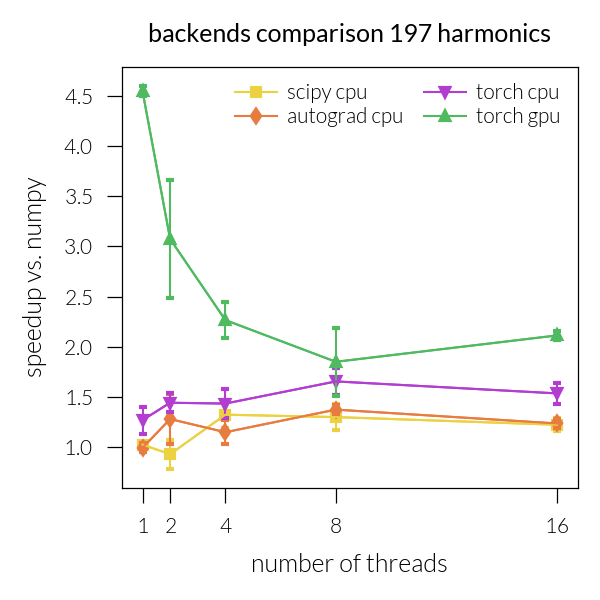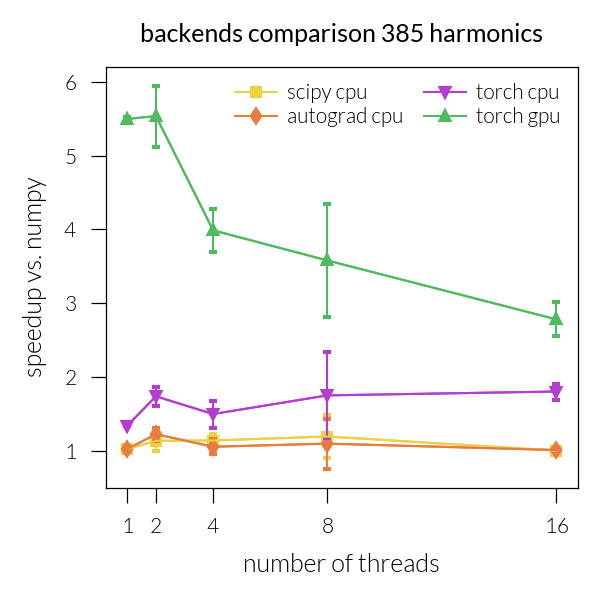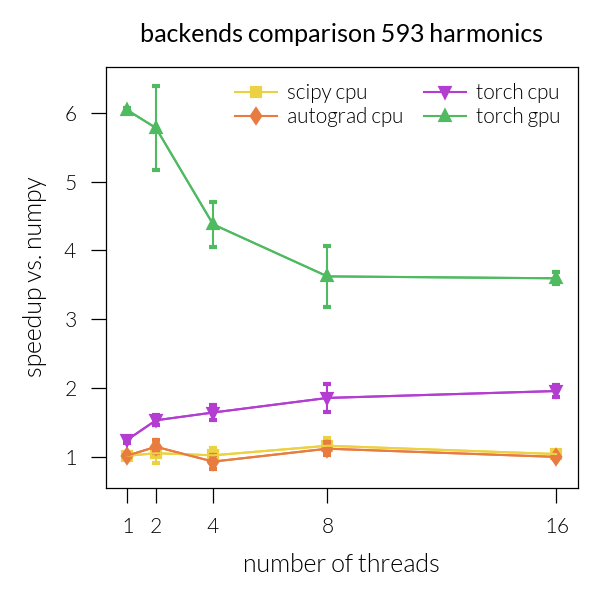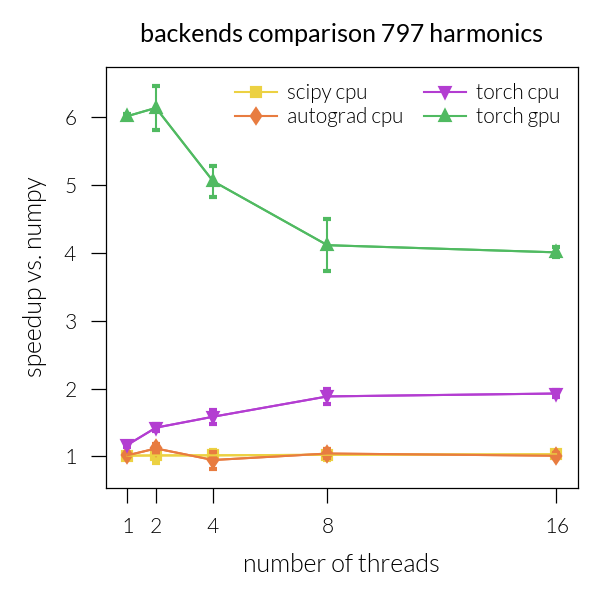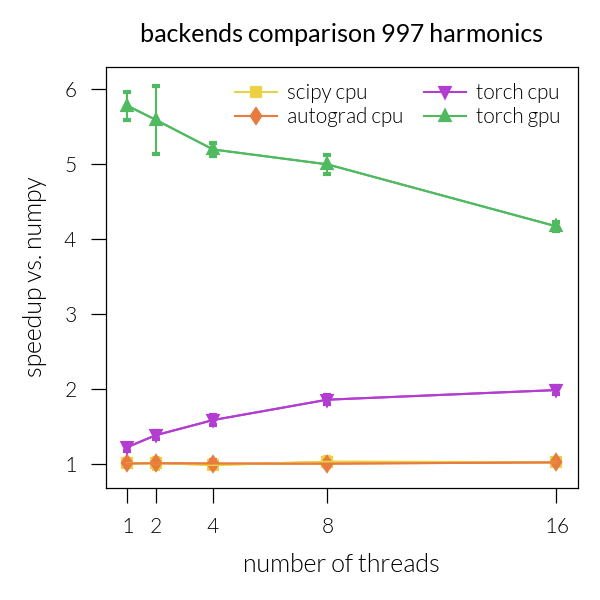Note
Go to the end to download the full example code. or to run this example in your browser via Binder
Backends comparison#
Numerical backends performace comparison.
import matplotlib.pyplot as plt
import numpy as np
markers = ["o", "s", "d", "v", "^", ">"]
figsize = (2, 2)
threads = [1, 2, 4, 8, 16]
devices = ["cpu", "gpu"]
# backends = ["numpy", "scipy", "autograd", "jax", "torch"]
# we skip jax as it is complicated to deal with multithreading so a fair comparison is impossible
backends = ["numpy", "scipy", "autograd", "torch"]
colors = ["#3b9dd4", "#ecd142", "#e87c40", "#b33dd1", "#50ba61", "#cd2323"]
Time vs. number of harmonics#
for num_threads in threads:
plt.figure(figsize=figsize)
i = 0
for backend in backends:
for device in devices:
g = "cuda" if device == "gpu" else device
if device != "gpu" or backend not in [
"numpy",
"scipy",
"autograd",
"jax",
]:
arch = np.load(
f"{num_threads}/benchmark_{backend}_{g}.npz", allow_pickle=True
)
NH = arch["real_nh"]
plt.plot(
arch["real_nh"],
arch["times"],
f"-{markers[i]}",
c=colors[i],
label=f"{backend} {device}",
)
times_all = np.array(arch["times_all"])
times_std = np.std(times_all, axis=1)
plt.errorbar(
arch["real_nh"],
arch["times"],
times_std,
c=colors[i],
capsize=1,
)
i += 1
plt.legend()
plt.yscale("log")
plt.xscale("log")
plt.xlabel("number of harmonics")
plt.ylabel("time (s)")
plt.title(f"backends comparison {num_threads} threads")
plt.tight_layout()
Speedup vs. number of harmonics#
for num_threads in threads:
plt.figure(figsize=figsize)
arch_np = np.load(f"{num_threads}/benchmark_numpy_cpu.npz", allow_pickle=True)
i = 1
for backend in backends:
for device in devices:
g = "cuda" if device == "gpu" else device
if device != "gpu" or backend == "torch":
arch = np.load(
f"{num_threads}/benchmark_{backend}_{g}.npz", allow_pickle=True
)
if backend != "numpy":
speedup = np.array(arch_np["times"]) / np.array(arch["times"])
plt.plot(
arch["real_nh"],
speedup,
f"-{markers[i]}",
c=colors[i],
label=f"{backend} {device}",
)
speedup_all = np.array(arch_np["times_all"]) / np.array(
arch["times_all"]
)
speedup_std = np.std(speedup_all, axis=1)
plt.errorbar(
arch["real_nh"],
speedup,
speedup_std,
c=colors[i],
capsize=1,
)
i += 1
plt.legend()
# plt.yscale("log")
# plt.xscale("log")
plt.xlabel("number of harmonics")
plt.ylabel("speedup vs. numpy")
plt.title(f"backends comparison {num_threads} threads")
plt.tight_layout()
Time vs. number of threads#
for inh in range(len(NH)):
plt.figure(figsize=figsize)
i = 0
for backend in backends:
for device in devices:
t_threads = []
t_threads_all = []
for num_threads in threads:
if device != "gpu" or backend == "torch":
g = "cuda" if device == "gpu" else device
arch = np.load(
f"{num_threads}/benchmark_{backend}_{g}.npz", allow_pickle=True
)
t = arch["times"]
# t = np.array(t)
t_threads.append(t)
t_threads_all.append(arch["times_all"])
if t_threads != []:
t_threads = np.array(t_threads)
plt.plot(
threads,
t_threads[:, inh],
f"-{markers[i]}",
c=colors[i],
label=f"{backend} {device}",
)
times_all = np.array(t_threads_all)[:, inh]
times_std = np.std(times_all, axis=1)
plt.errorbar(
threads,
t_threads[:, inh],
times_std,
c=colors[i],
capsize=1,
)
i += 1
plt.xticks(threads)
plt.legend(ncol=2)
plt.yscale("log")
# plt.xscale("log")
plt.xlabel("number of threads")
plt.ylabel("time (s)")
plt.title(f"backends comparison {NH[inh]} harmonics")
plt.tight_layout()
Speedup vs. number of threads#
for inh in range(len(NH)):
plt.figure(figsize=figsize)
i = 1
for backend in backends:
for device in devices:
speedup_threads = []
speedup_threads_all = []
for num_threads in threads:
if device != "gpu" or backend == "torch":
g = "cuda" if device == "gpu" else device
arch = np.load(
f"{num_threads}/benchmark_{backend}_{g}.npz", allow_pickle=True
)
arch_np = np.load(
f"{num_threads}/benchmark_numpy_cpu.npz", allow_pickle=True
)
if backend != "numpy":
t = arch["times"]
speedup = np.array(arch_np["times"]) / np.array(arch["times"])
speedup_threads.append(speedup)
speedup_all = np.array(arch_np["times_all"]) / np.array(
arch["times_all"]
)
speedup_threads_all.append(speedup_all)
if speedup_threads != []:
speedup_threads = np.array(speedup_threads)
if backend != "numpy":
plt.plot(
threads,
speedup_threads[:, inh],
f"-{markers[i]}",
c=colors[i],
label=f"{backend} {device}",
)
speedup_std = np.std(np.array(speedup_threads_all)[:, inh], axis=1)
plt.errorbar(
threads,
speedup_threads[:, inh],
speedup_std,
c=colors[i],
capsize=1,
)
i += 1
plt.xticks(threads)
# plt.ylim(0.25, 3.8)
plt.legend(ncol=2)
# plt.yscale("log")
# plt.xscale("log")
plt.xlabel("number of threads")
plt.ylabel("speedup vs. numpy")
plt.title(f"backends comparison {NH[inh]} harmonics")
plt.tight_layout()
Total running time of the script: (0 minutes 5.549 seconds)
Estimated memory usage: 523 MB

